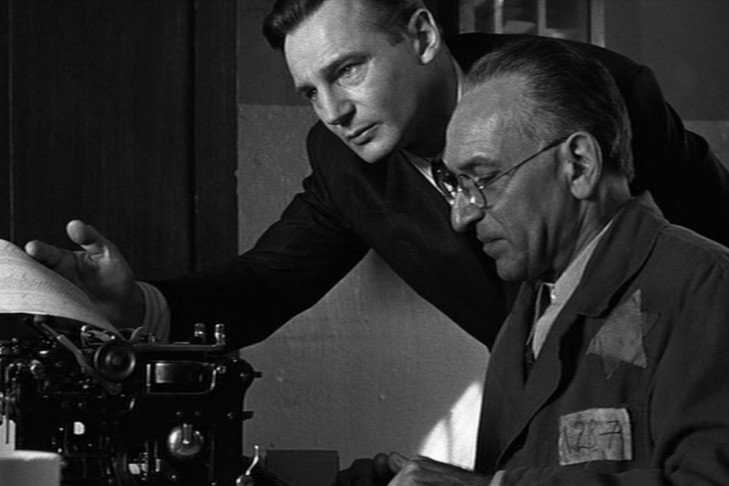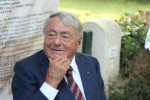Universal Pictures has re-released a restored version of “Schindler’s List” to commemorate the 25th anniversary of the film’s opening. Scheduled for a limited theatrical run this week, Steven Spielberg directed the story of Oskar Schindler, a complicated hero who saved the lives of 1,200 Jews during the Holocaust. The film won seven Academy Awards, including Best Picture and Best Director for Spielberg.
The tagline on the poster for the film’s re-release says: “A story of courage that the world needs now more than ever.” Speaking to Entertainment Weekly, Spielberg said: “When the film initially came out, it made one of the most incomprehensible acts of humankind accessible. It didn’t make it understandable, but reachable to audiences to be able to explore it, to be moved in such a way to want to stand against all hatred, and know it is real and what can shockingly happen in the 20th and 21st centuries if we are not vigilant.”
The year 1993 turned out to be a banner one for memorializing the Holocaust. The film opened the same year as the United States Holocaust Memorial Museum opened its doors adjacent to the National Mall in Washington, D.C. Over the course of these 25 years, the museum has welcomed 45 million visitors.
In 2004, the Library of Congress selected “Schindler’s List” for preservation in the National Film Registry. Three years later, the film scored eighth place on the American Film Institute’s list of “100 Greatest American Films of All Time.”
Shot in black and white, “Schindler’s List” was filmed over 72 days on location in Poland. Liam Neeson gave a daring performance as Schindler, a Sudeten German, who was a philandering, greedy member of the Nazi party. Schindler initially used stolen Jewish wealth and slave labor to build his metal works business. Ralph Fiennes played the sadistic commandant Amon Göth. Göth shot Jews for sport each morning from a balcony overlooking the Krakow-Plaszow concentration camp.
The film was based on the Australian novelist Thomas Keneally’s historical novel featuring Schindler. Oskar Schindler’s story was little known outside the group of Jews he saved. Keneally happened upon it when he visited survivor Leopold Page’s leather goods store in Beverly Hills. Page’s story about Schindler intrigued the writer, and the result was a book originally titled “Schindler’s Ark.”
When Spielberg made the film over 25 years ago, he hardly imagined the cultural and historical impact it would have. He never expected the film to be a moneymaker; it was a moral calling for the legendary director. Clocking in at over three hours, “Schindler’s List” grossed a surprising $321 million worldwide when it was released. Spielberg had said from the beginning that making the film was a “sacred task,” and donated his entire share of the profits to charity.
Soon after the film was in the theaters, Holocaust survivors wanted to share their stories with Spielberg. Their tales of survival fascinated Spielberg, and he decided to use his vast resources to start a video library. The result was the USC Shoah Foundation: The Institute for Visual History and Education, now housed at the University of Southern California. The foundation recorded the testimony of over 50,000 Holocaust survivors in 57 countries, making it the largest oral history archive of any historical event. The foundation has also taken testimonies from other genocides that include Cambodia, Rwanda and Bosnia.
Related
Spielberg’s refusal to make Schindler a straightforward hero not only gave the film verisimilitude, but it also offered a complicated picture of what heroism can look like. The film ends with actual survivors who were on Schindler’s list visiting his grave on Mount Zion in Israel. A final frame of the film informs viewers of the fact that in 1993, there were fewer than 4,000 Jews left in Poland. Twenty-five years ago, there were already more than 6,000 descendants of the Jews Schindler saved.
In a recent interview with Lester Holt of NBC News, Spielberg asserted that genocidal hate is on the rise. Speaking about the recent mass shooting at the Tree of Life Synagogue in Pittsburg, Spielberg told Holt, “When collective hate organizes and gets industrialized, then genocide follows.” In the same interview, he said: “We have to take it more seriously today than I think we have had to take it in a generation. I think there is more at stake today than even back [when ‘Schindler’s List’ was released].”
About the making of the film, Spielberg added: “I don’t think I’ll ever do anything as important. So, this, for me, is something that I will always be proudest of.”
“Schindler’s List” will be show this week at West Newton Cinema. Find showtimes here.




